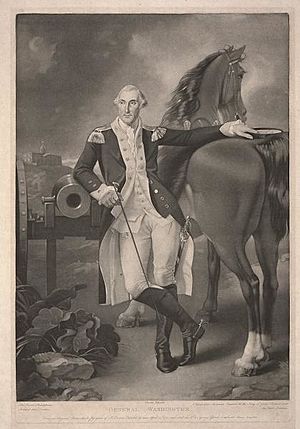Thomas Stothard facts for kids
Thomas Stothard RA (born August 17, 1755 – died April 27, 1834) was a talented British artist. He was known as a painter, an illustrator, and an engraver. His son, Robert T. Stothard, also became a painter. Robert painted an important event in 1837: the announcement of Queen Victoria becoming queen outside York Minster.
Contents
Early Life and Artistic Beginnings
Thomas Stothard was born in London. His father was a successful innkeeper. As a child, Thomas was often sick. So, he was sent to live with relatives in Yorkshire when he was five. He went to school in places like Acomb and Tadcaster.
Discovering His Talent
Thomas showed a natural gift for drawing from a young age. He started an apprenticeship to learn how to design patterns for fancy silk fabrics. In his free time, he loved to draw pictures for his favorite poems. An editor named James Harrison really liked some of his early drawings. When his master passed away, Thomas decided to become a full-time artist.
A Busy Artist's Career
In 1778, Stothard began studying at the Royal Academy. This was a very important art school in London. He became an associate member in 1792 and a full member in 1794. Later, in 1812, he became the librarian for the Academy.
Illustrating Famous Books
Stothard created many pictures for books. Some of his first illustrations were for the works of Ossian and Bell's Poets. In 1780, he started regularly contributing to the Novelist's Magazine. For this magazine, he made 148 designs. These included pictures for The Adventures of Peregrine Pickle and Clarissa.
He also designed pictures for many other famous books, such as:
- Two sets of illustrations for Daniel Defoe's Robinson Crusoe
- John Bunyan's The Pilgrim's Progress (1788)
- Oliver Goldsmith's The Vicar of Wakefield (1792)
- The works of Swiss poet Salomon Gessner (1802)
- William Cowper's Poems (1825)
- Giovanni Boccaccio's The Decameron
Even when he was older, his imagination was still very active. His drawings for Samuel Rogers's Italy (1830) and Poems (1834) showed his amazing skill.
His Most Famous Paintings
An art historian once guessed that Stothard made about five thousand designs in his life. About three thousand of these were turned into engravings. His oil paintings were usually small. He often used rich, bright colors, similar to the style of Peter Paul Rubens, an artist he admired.
One of his most important oil paintings is The Vintage, which is in the National Gallery. He also contributed to the Boydell Shakespeare Gallery. But his most famous painting is Procession of the Canterbury Pilgrims. This painting is now in Tate Britain. Engravings made from this painting became incredibly popular.


Decorating Grand Buildings
Besides his smaller paintings, Stothard also decorated large buildings. He painted the grand staircase at Burghley House with scenes like War and Intemperance. He also decorated the library of Colonel Johnes' mansion of Hafod in Wales. There, he painted scenes from old French histories. In Edinburgh, he painted the ceiling of the Advocates' Library with figures of Apollo and the Muses. He even designed decorations for Buckingham Palace, but these were not completed.
His Family and Later Life
Thomas Stothard married Rebecca Watkins in 1783. They had eleven children, but only six of them lived past infancy. His family lived in Henrietta Street, Covent Garden, and later moved to Newman Street in London. Rebecca passed away in 1825.
Among his children was Charles Alfred Stothard, who also became an artist and illustrator. Sadly, Charles died before his father. Another son, Alfred Joseph Stothard, became a medallist for King George IV.
Thomas Stothard died on April 27, 1834. He was buried in Bunhill Fields in north London.
In Literature
Thomas Stothard's paintings were so inspiring that they were even written about in poems. For example, his painting of Erato (one of the Muses) was described in a poem by Letitia Elizabeth Landon in 1823. Another of his paintings, The Fairy Queen Sleeping, was also featured in her poems.
See also
 In Spanish: Thomas Stothard para niños
In Spanish: Thomas Stothard para niños



